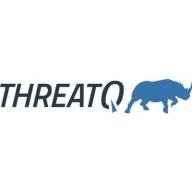

ThreatQ and Palo Alto Networks Cortex XSOAR are competing cybersecurity solutions in the threat intelligence and security orchestration category. While ThreatQ offers lower costs and flexibility, Cortex XSOAR's comprehensive feature set and strong performance make it the superior choice.
Features: ThreatQ's standout features include integrating threat intelligence with customized workflows, offering adaptability for security teams, and streamlining threat management. Cortex XSOAR distinguishes itself with advanced automation, powerful analytics capabilities, and effective orchestration for rapid incident response.
Ease of Deployment and Customer Service: ThreatQ provides straightforward deployment and significant support for integration in various environments. Cortex XSOAR, although requiring more initial configuration, excels in seamless integration with existing security infrastructures. Its customer service is noted for being responsive and expert, aiding organizations in leveraging its full capabilities.
Pricing and ROI: ThreatQ typically presents a lower initial cost, leading to a positive ROI with customizable solutions for varying budgets. In contrast, Cortex XSOAR, while having a higher price point, justifies the investment by offering substantial automation benefits and reducing manual task durations.
| Product | Market Share (%) |
|---|---|
| Palo Alto Networks Cortex XSOAR | 9.7% |
| ThreatQ | 1.2% |
| Other | 89.1% |

| Company Size | Count |
|---|---|
| Small Business | 19 |
| Midsize Enterprise | 8 |
| Large Enterprise | 24 |
Palo Alto Networks delivers a complete solution that helps Tier-1 through Tier-3 analysts and SOC managers to optimize the entire incident life cycle while auto documenting and journaling all the evidence. More than 100+ integrations enable security orchestration workflows for incident management and other critical security operation tasks.
Palo Alto Networks Cortex XSOAR is a piece of Security Orchestration, Automation, and Response software that redefines what it means for a program to orchestrate security in an automated manner. It is a next-generation solution that offers all of the features of dozens of siloed security operations center tools in one place. Cortex XSOAR combines case management, automation, real-time collaboration, and threat intelligence management to create a platform that can handle all aspects of system security. Teams that make use of Cortex XSOAR can expect to cut the number of issues that they will have to deal with by 75%. At the same time, the speed at which they resolve those issues that slip through will rise by 90%.
Cortex XSOAR ensures that all of the IT and security tools that you employ function as a unified system. It does this by employing hundreds of integrations that allow you to run a wide variety of programs at once without ever worrying about them interfering with each other. These integrations are limited only by your imagination. They can be used immediately as they are, if that is what you need. However, they can also be customized according to the requirements of your system. This approach provides you with the maximum levels of both flexibility and utility.
The model that this platform uses is based on a machine learning algorithm. The level of automation allows you to provide more than an unchanging and inflexible blanket of coverage. Cortex XSOAR takes all of the data that it gathers and uses it to expand its protective capabilities. This creates recommendations that you can use to create a threat playbook that can be deployed uniformly throughout your organization.
Benefits of Palo Alto Networks Cortex XSOAR
Some of Palo Alto Networks Cortex XSOAR’s benefits include:
Reviews from Real Users
Palo Alto Networks Cortex XSOAR’s centralized monitoring interface and automation are two features that help it stand out. This might help explain why one quarter of the Fortune 500 companies choose Palo Alto Networks Cortex XSOAR over the competition.
Peerspot users note the effectiveness of these features. One user wrote, “We were looking for a single pane of glass type of solution that would allow us to physically be in one appliance - be able to work in concert with other servers that we have within our environment. We wanted orchestration and automation. The single pane of glass was the most important part.” Another noted, "The automation part and the playbook creation part are awesome. The way it is responding to the customers and incidents is also very good. In the SOC environment, I guess it will carry out around 50% of the work."
ThreatQ is a cybersecurity platform designed to enhance threat intelligence operations. It centralizes and manages threat data, allowing organizations to identify and respond to threats more efficiently.
ThreatQ is designed to empower security teams by personalizing threat intelligence and automation processes. It integrates with existing technologies, streamlining data collection and distribution. This promotes efficient detection, investigation, and response to security incidents, improving overall cybersecurity posture and resilience.
What are the key features of ThreatQ?ThreatQ is versatile in industries like finance and healthcare, where cybersecurity is crucial. It facilitates swift threat identification and risk management, essential for protecting sensitive data and complying with industry regulations. Its adaptability allows it to fit into diverse security architectures, making it a valuable asset across sectors.
We monitor all Security Orchestration Automation and Response (SOAR) reviews to prevent fraudulent reviews and keep review quality high. We do not post reviews by company employees or direct competitors. We validate each review for authenticity via cross-reference with LinkedIn, and personal follow-up with the reviewer when necessary.